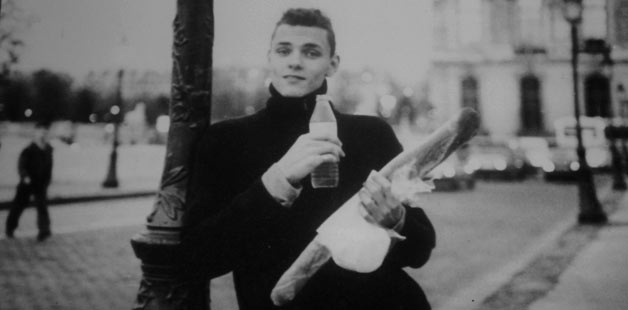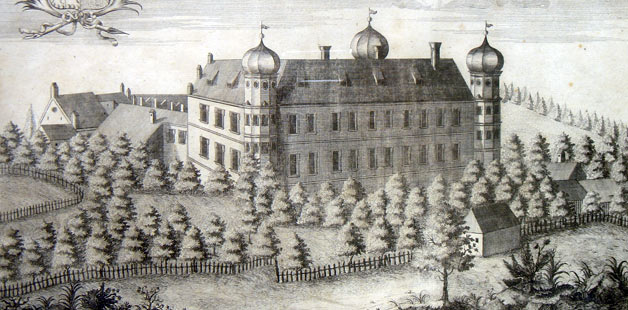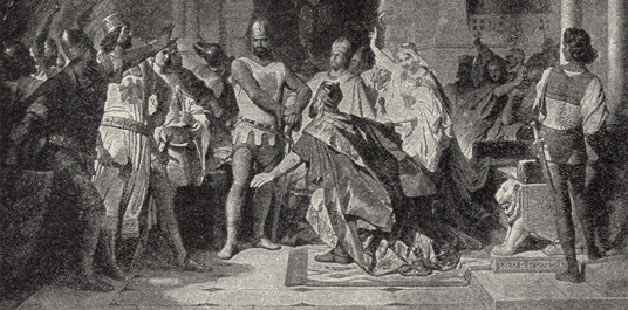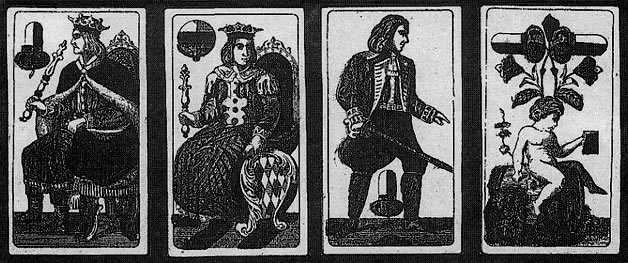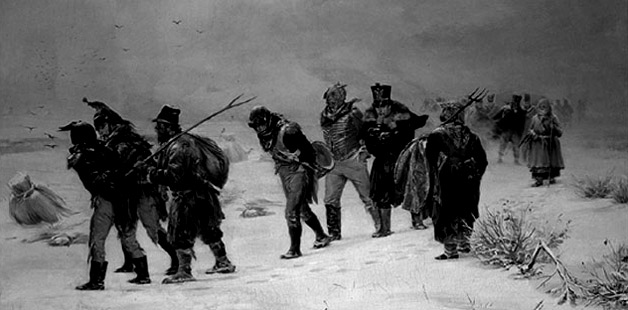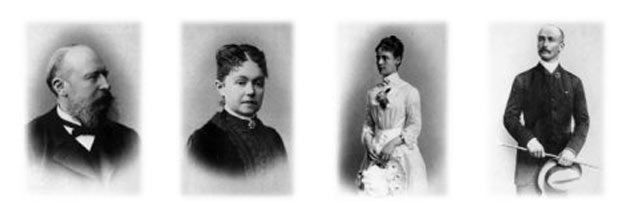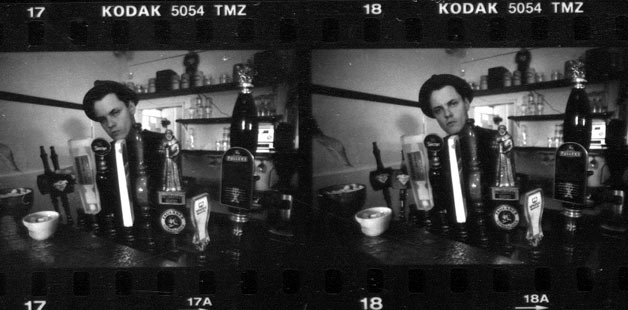
![]()
Let us begin with the Weltenburger brewery which dates back to its monastery origins in the year 1050. Monasteries in the middle ages were havens for people travelling the countryside. At that time travelling was dangerous and people gathered in monasteries which were not only places of quiet meditation where literature was being developed, they were also places for travelers to find food and drink. The monasteries provided shelter, and were in many ways the first restaurants. Out of this tradition came the making of beer and wine. Each monastery developed its own distinctive, regional style of beer and wine to go with the simple dishes that they served. Thus continued the age-old tradition of gathering among friends in a place that is safe and warm.
In France in the middle ages there were soup kitchens with huge pots over a fire in which they threw whatever they had, the beginning of the tradition of soups for large crowds. In the first and second World Wars simple soups and stews were served to soldiers as well as to the civilians that were suffering. The soup kitchen was a place of hope where people could be sure to find a little nourishment.
By the 18th century food culture was celebrated all over Europe. The noble houses also cultivated the development of various cuisines. In part as a result of the numerous wars with neighboring countries, the conquerors brought new food influences and traditions. When cities developed around the marketplaces, labor diversified and food vendors became more specialized. People began to gather in the towns and the towns' taverns or Wirtshäuser. Monasteries and the local rulers began to license these taverns to sell their beers and wines, which was a great privilege. The rulers established quality standards in order to control their products. People then did not have access to as many resources. The Wirtshäuser had simple menus, perhaps one meal offered per day, as in a home.
The Wirtshaus became a central point for the villagers to gather and discuss their day. Deals were made in the Wirtshaus, disputes over land settled, and so forth. The Wirtshaus provided a neutral base for social gatherings, in the same way they continue to do so today...Business deals, love stories, whatever life brings along...
By the 20th century there were hundreds of Wirtshäuser in the bigger cities, but they maintained their personal, local identities. As the population became more mobile, people could try cuisines from all over Europe. For example, a Hausfrau from a small Bavarian village might have a chance for the first time to try a pasta recipe from Sicily.
Suppenküche owner Fabrizio Wiest was previously a graphic designer in Munich, but preferred to deal more directly with people. In 1993 he came to San Francisco with the concept of opening a traditional German Wirtshaus to show Americans something about German beer, as well as the warmth of the atmosphere from his home. Fabrizio was born in Heidelberg and raised in Mengkofen, a region approximately one hundred miles east of Munich near the Bavarian forest. His grandfather had a small country brewery which delivered beer to several dozen Wirtshäuser in the small region of Mengkofen until 1970. Fabrizio has fond memories of being at the old beer places with the local people, eating, drinking, talking, and being raised in an environment with farm people.
It is from this tradition that the Suppenküche originated. "Cooking is a little like witchcraft, like alchemy, to transform people from angry and tense to relaxed and warm, happy..." Fabrizio has said. "Therefore the right witch doctors in the kitchen can perform magic on the customers..."
![]()
The Mengkofener reigned in this wooded region in Bavaria from 1295 to 1514. Near the center of the village a castle was built, and was first referred to as the Tunzenberg castle in 1480. Throughout the ages, however, the castle changed ownership many times. From 1651 to 1752 the castle was occupied by the Freiherrn von Lerchenfeld family. The last noble family to live in the castle was the Haniel-Niethammers, who lived there from 1830 until 1988.
When Henry the Lion of the house of Welf, founder of Munich, was deposed as Duke of Saxony and Bavaria by his cousin, Frederick I, Holy Roman Emperor, in 1180, Bavaria was awarded as fief to the Wittelsbacher. The family ruled Bavaria’s shifting borders untill 1918. The Wittelsbacher owned all the land and the Hofbrauhausen.
Herzog Otto III, Duke of Lower Bavaria from 1290 to1312 was in debt due to his involvement in Austrian and Hungarian affairs, and needed to find ways to optimize his financial situation. One solution was to tax the farmers of the region over which he had jurisdiction. All the nobles in the small villages had direct jurisdiction over the local farmers. In disputes over land and taxes they did not, however, have power to impose the death sentence. More serious problems went on to the higher courts of the nobility.
In the centuries that followed and throughout the middle ages there were constant wars and plagues in the region causing great suffering to the people. For instance there was a small war in 1435 between Herzog Albrecht von Straubing and his father Herzog Ernst because Albrecht wanted to marry Agnes Bernauer, who was not of noble origin. Ernst had Agnes, his future daughter-in-law, drowned in the river before the wedding could take place which incited the war with his son. To this day there is a special dessert commemorating this tragedy named the "Agnes Bernauer Torte" served at two local cafes, the Straubing Café Kroner and the Garmisch Parten Kirchen.
In the years 1094 and 1349 and 1463 and 1650 there were plagues that wiped out entire villages. From 1618 until 1648 there was a horrifying thirty-year religious war between the new Protestants and the Catholics. After this war the region was down to one third of its previous population. From 1701 to 1714 there was the dispute with Spanish inheritors over ownership of parts of the region. During this time Bavaria was occupied by many different troops. The people were treated poorly, especially by the Austrian army. In 1705 approximately 20,000 farmers revolted against the Austrian occupation, but in 1706 the revolution was suppressed and 4,000 Bavarian farmers were beaten to death.
Mengkofen has remained predominantly Roman Catholic, even through the Protestant Reformation. Many religious artifacts dating to the pre-Christian era have been found in the area as well. Of special note are the Ironmen, small iron statues found near the church in Hagenau, which is in the oldest section of the village. The Mengkofener people also saved treasures left by the French and Russians, especially religious icons, when the French came through Bavaria to and from Russia from 1800 to 1805.
In 1812 Napoleon recruited 30,000 Bavarians to accompany him to the Russian front, where they all died due to the extremely harsh winter. In 1870-1871 there was a war between Germany and France. In this war, as in the subsequent Great War and World War II, many Bavarians fought and died.
Pictured above is Friedriech Freihherr von Niethammer, who died in 1911, one of the last owners of the Tunzenberg Castle. He married Marie von Niethammer (died 1913), and they had three daughters. The eldest daughter, Paula von Niethammer (died 1942), inherited the castle. She married Eugen von Haniel, pictured far right, who was also known as the "Herrn Obersleutnant."
The Haniel-Niethammers had four children. From left to right, Fritz, Walter, Marie-Luise and Gerhard. The eldest, Gerhard, was an artist and moved to Paris where he lived for the duration of his life. Marie- Luise lived until the age of one hundred and ten. Walter, sadly, killed himself in the castle during World War II. Fritz, the youngest of the Haniel-Niethammers and the last heir, stayed in Tunzenberg and developed the farm and the forest, owned the brewery, and went on to become a member of the German Bundestag in the early days, from 1957 to 1965. When Fritz von Haniel-Niethammer died in the mid-seventies much of the traditional way of life died with him. The family sold the property and left their home, and so the connection to the Mengkofener and Tunzenberger people was lost. "This was very dramatic," says Fabrizio Wiest, grandson of Fritz. "Many valuable things were lost from the old time, the old ways of living. The connection to the land and to the people who lived in such traditional ways." Suppenküche brings a bit of the atmosphere from that small Bavarian village to San Francisco, merging the monastery with the Wirtshaus, serving a cuisine developed throughout the ages, in a place that is safe and warm.




